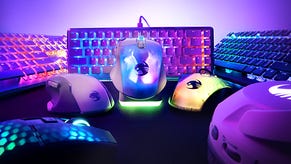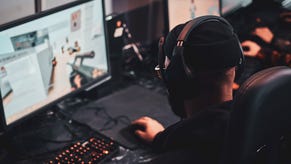Gabe: "Zero per cent" of people get motion sick from Vive HMD
Newell is confident that Lighthouse makes Valve's VR nausea-free
Gabe Newell has told press that Valve has solved the problem of motion-sickness for VR users, proclaiming that "zero per cent of people get motion sick" when using the company's Vive headset.
The new tech, developed in tandem with HTC, was revealed three days ago at the beginning of GDC. Early reports from those at the show who've been able to experience it first hand have been overwhelmingly positive, with many claiming that it's the best VR experience currently being exhibited.
Previously Newell had been very susceptible to motion sickness himself, calling them the "world's best motion sickness inducers." However, in an interview with the New York Times, he was bullish about the fact that there'll be no such experiences with Vive. The difference, according to Valve, is the headset's revolutionary 'Lighthouse' positional system - technology which Valve says its absolutely willing to share with any hardware manufacturer.
Whilst the Vive's main competitors have motion-tracking solutions of their own, don't be surprised if they decide to take advantage of Lighthouse should Valve's claims prove to be true. In fact, Oculus has already benefited from some of Valve's tech, with the firm sharing previous work in order to ensure that the VR market launched in as healthy and reliable manner as possible in order to prevent a massive setback in public opinion.
Still, it would be understandable if there were some bad blood between the two companies. Oculus has 'inherited' a large number of Valve's specialist VR staff, as well as some alumni.
If you're not at GDC and want to learn more about Vive, Valve's Chet Faliszek will be at EGX Rezzed in London next week, discussing Steam VR.









